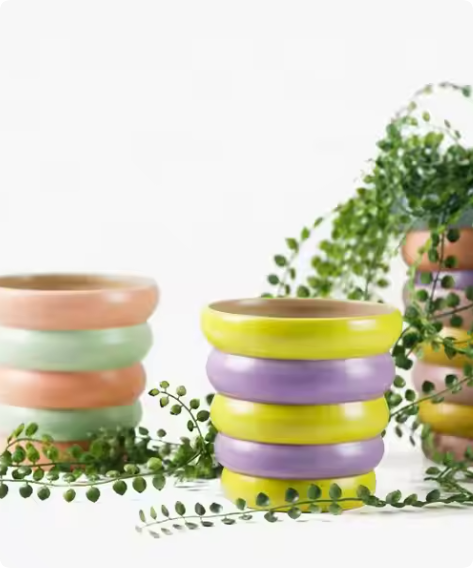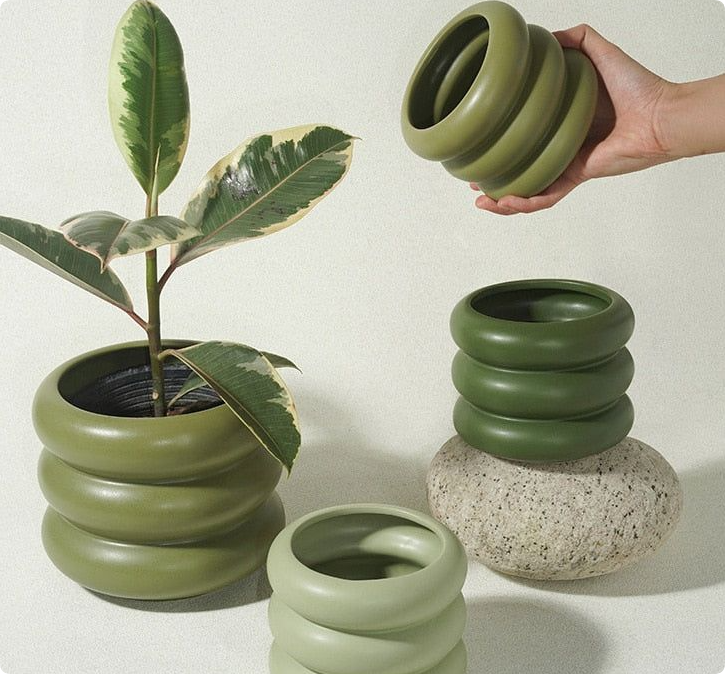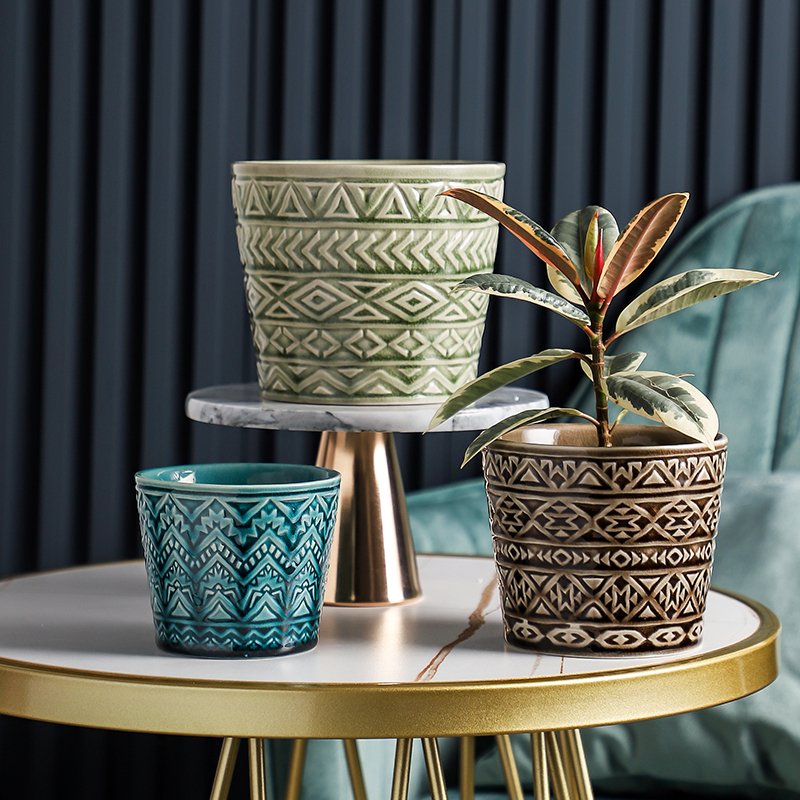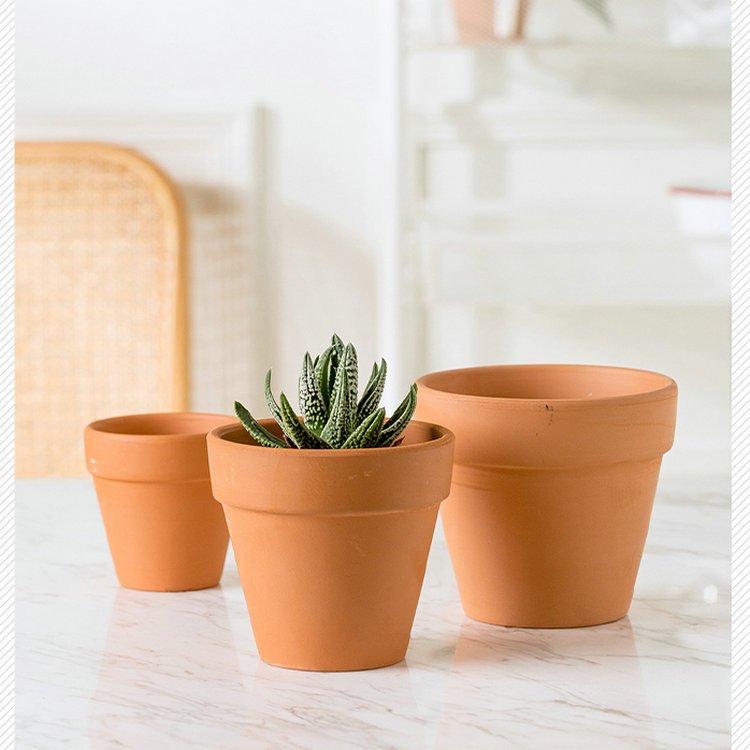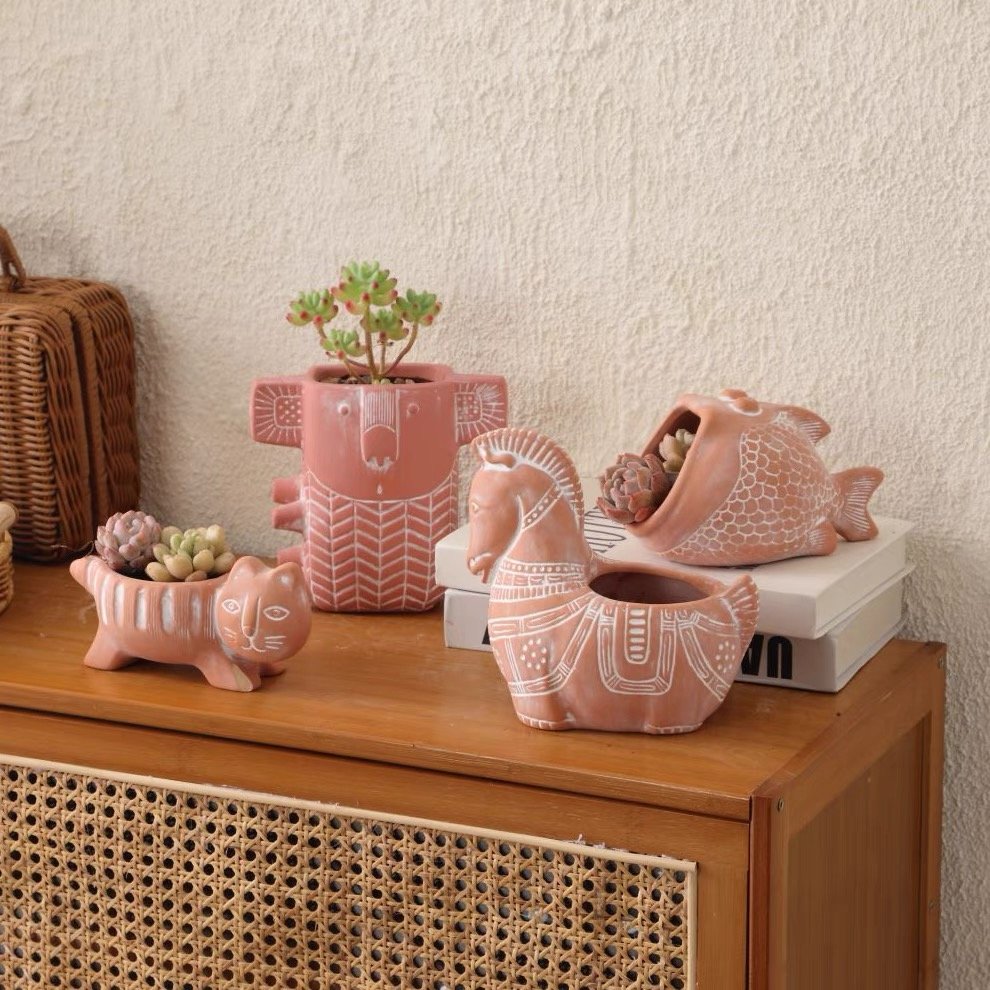In the art of bonsai, every detail reflects a dialogue between nature and craftsmanship. The bonsai pot, as the “home” of the plant, not only affects the growing environment but also plays a key role in visual harmony. One of the most common dilemmas enthusiasts face is choosing between glazed and unglazed pots. In this article, we’ll explore the aesthetic and functional differences between the two, helping you make the best choice for your plants.
1. Glazed Bonsai Pots: A Splash of Color and Shine
Glazed pots stand out for their vibrant colors and glossy finishes. The glaze, formed through high-temperature firing, creates a glass-like surface that adds both beauty and some functional benefits.
Aesthetic Advantages
- Vivid Color Options: Glazed pots come in a wide range of hues—deep blue, emerald green, ivory white—allowing for both complementary and contrasting styling with the plant.
- High Gloss Finish: The shiny surface enhances the pot’s visual impact, especially under lighting.
- Perfect for Display: When used in exhibitions or as home decor, glazed pots elevate the overall aesthetic of the bonsai presentation.
Functional Traits
- Good Water Retention: The glaze prevents moisture from escaping through the pot walls, making them ideal for water-loving species.
- Easy to Clean: The smooth finish resists dirt and mineral buildup, simplifying maintenance.
2. Unglazed Bonsai Pots: Embracing Earthiness and Breathability
Unglazed pots preserve the natural texture and color of the clay. Their surface is rougher, often in earthy tones like brown and gray, and they’re deeply rooted in traditional bonsai practices.
Aesthetic Advantages
- Natural Texture: Unglazed pots exude an organic and grounded look that complements the plant’s natural form.
- Neutral Tones: These subdued colors make it easier to focus on the tree itself rather than the container.
- Traditional Appeal: In Japanese aesthetics, unglazed pots align with the concept of wabi-sabi—finding beauty in imperfection and simplicity.
Functional Traits
- Highly Breathable: The porous clay allows for better air circulation, promoting root health.
- Excellent Drainage: Prevents root rot by releasing excess water efficiently.
- Temperature Regulation: Clay’s breathable nature helps buffer against temperature swings, protecting sensitive roots.
3. Glazed vs. Unglazed: A Side-by-Side Comparison
| Feature | Glazed Pots | Unglazed Pots |
|---|---|---|
| Aesthetic Appeal | Colorful and glossy | Natural, earthy textures |
| Breathability | Low | High |
| Water Retention | High | Low |
| Ideal Plant Types | Moisture-loving (e.g., maples, flowering bonsai) | Drought-tolerant (e.g., pines, junipers) |
| Suitable Environments | Dry, moisture-retentive | Humid, well-ventilated |
| Cleaning & Care | Easy to clean | Requires occasional descaling |
| Durability | Generally long-lasting | Can crack in freezing temperatures |
| Cost Range | Often more expensive | Generally more affordable |
4. How to Choose the Right Pot: A Practical Approach
When selecting a bonsai pot, consider both the type of plant and the environment it will grow in:
- Plant Species: If your bonsai thrives in moist soil (like maple or flowering trees), glazed pots may be more suitable. For species that prefer drier conditions (such as pine or juniper), unglazed pots offer better airflow and drainage.
- Humidity Levels: In drier climates, the moisture-retaining quality of glazed pots helps keep roots hydrated. In humid environments, unglazed pots help avoid excess moisture and root rot.
- Aesthetic Preference: For a refined, decorative look, go with glazed. For a natural or traditional style, unglazed is your go-to.
5. Frequently Asked Questions (FAQ)
Q1: Are glazed bonsai pots suitable for all plants?
A1: Not really. While they work well for moisture-loving species, they may not suit drought-tolerant trees due to limited breathability.
Q2: Do unglazed pots break easily?
A2: They are more vulnerable in freezing climates because they absorb water, which can expand and crack the pot if frozen.
Q3: How do I clean mineral buildup on unglazed pots?
A3: Soak them in a vinegar-water solution and scrub gently with a brush to remove salt or calcium deposits.
Q4: Should the inside of a glazed pot also be glazed?
A4: Not necessarily. Unglazed interiors promote better root adhesion and air exchange, aiding in plant health.
Q5: How can I match the pot color with my bonsai?
A5: You can choose a color that complements the foliage and flowers for harmony, or use contrasting tones to highlight specific features of the plant.
6. Choosing the Right “Home” for Your Bonsai
A bonsai pot is more than a container—it’s a visual and functional extension of the tree itself. Whether you’re drawn to the vibrant beauty of glazed pots or the earthy simplicity of unglazed ones, the key is to align your choice with the needs of your bonsai and the setting it will live in.
As a ceramic factory in China specializing in garden planters, vases, and home decor, we offer a wide range of bonsai pot options. We welcome global buyers—whether you’re in home and garden retail, gifting, or cross-border e-commerce—and provide reliable OEM & ODM services tailored to your brand and vision.

